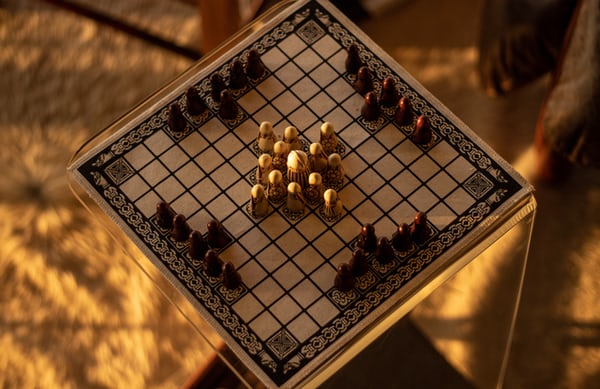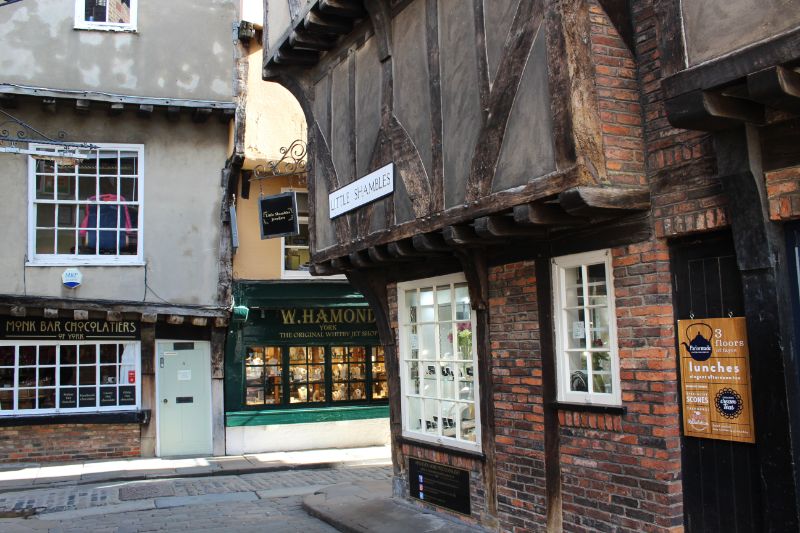About halfway between London and Edinburgh lies the cathedral city of York. Known for its stunning historical landmarks, a short walk through the streets conveys to visitors how it has earned such a unique repetition. The city’s name comes from the Viking name ‘Jorvik’; although the Romans founded the city as ‘Eboracum’ back in 71AD, it’s the Viking name that has stuck.
It is clear that York’s history is long and rich, spanning hundreds of decades and thousands of changes, but did you know that the town has also influenced many video games and holds its own historical significance in the ever-evolving world of gaming? Let’s take a look at how one of England’s most intriguing locations has become an important setting that is still influencing modern-day users from many different countries.

Among the findings of the York Archaeological Trust excavation of 1976 was a hnefatafl board, further emphasizing and proving the Viking’s love for the game
Viking Games
Similar to the types of entertainment enjoyed in our social groups today, the Vikings and their descendants equally loved gathering together to have fun. The most popular game played by the Norse people was a board entitled “Hnefatafl” which was brought along with them to nearly every place they travelled to. Although the rules were defined much later after the game’s origins, it is known as a game of strategy in which the objective is to corner a king who is defending his castle. The game is played with two players, one acting as the king and the other as multiple attackers. Victory is gained when the attackers disable the king, blocking him on all sides so that he cannot move.
During the Viking Age, Hnefatafl was a beloved game played by many all over medieval Europe. It wasn’t until later in the 12th century with the rise of a game named chess that the Scandinavian board game started to be traded in for something more exciting.
Modern-day Relevance
Today, the popularity of these games from the past has been replaced with more modern opportunities like visiting one of the city’s casinos or playing video-games at home. As York’s tourism sector has continued to bustle over the years, groups of people are, now more than ever, enjoying the entertainment provided by the UK’s longstanding tradition of betting shops and the fun that casino slot machines can offer. But modern gaming and entertainment don’t stop here.
The city has also inspired some of the most beloved console games of all time such as Goldeneye 007 for the Nintendo 64, which showcased a bunker similar to the one used in 1960s York by the Royal Observer Corps. In fact, there have been many video games set in York over the years and, most recently, the latest edition of the top-selling Assassin’s Creed series will feature the historic town. Named Assassin’s Creed Valhalla, the game takes place in the time of the Vikings, introducing their history to a huge number of gamers as the console series entertains more than 95 million players across the world. Set to be released in mid-November, the game is sure to draw even more users with its high-quality graphics and unique storyline. Although the city’s ancient history lies in the past, this is just one example of how it reveals itself still in the modern age.
 The streets of York are curious and historical, transporting visitors far back in time
The streets of York are curious and historical, transporting visitors far back in time
Places to Visit
The Viking ages in York and beyond are fascinating points of history that should not be over-looked. Not only has the sphere of gaming been influenced heavily by the stories that still penetrate modern society today, but other aspects of life in England are even more interesting if you learn the backstory of the Viking people. A must-see spot in York for people interested in deepening their knowledge is the world-famous Jorvik Viking Centre. While many attractions are worth your money in York, this one is among the most highly recommended. Built on the same ground that Vikings wandered hundreds of years ago, the Jorvik Centre allows visitors to experience life as it would have been in 10th century York.



